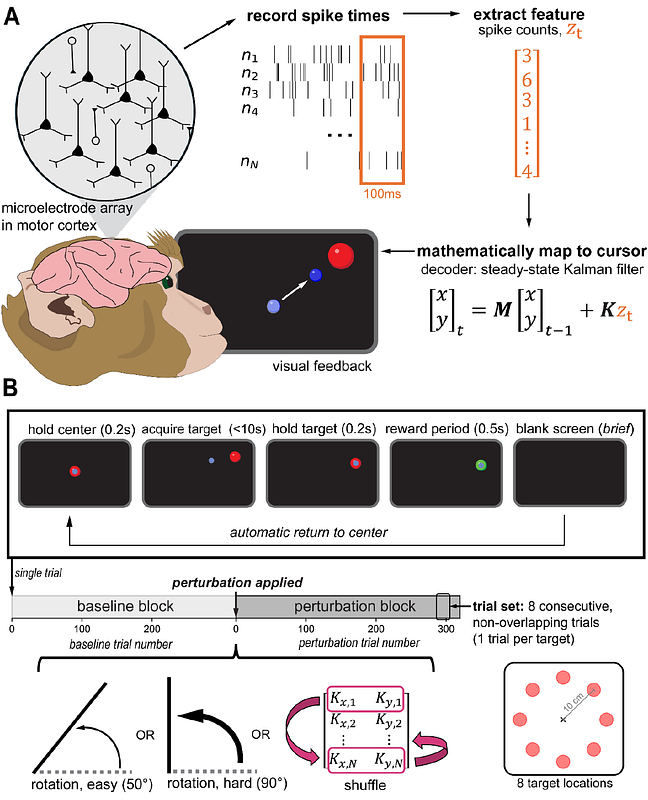Population-level constraints on single neuron tuning changes during behavioral adaptation

Population-level constraints on single neuron tuning changes during behavioral adaptation
Stealey, H. M.; Zhao, Y.; Lu, H.-Y.; Contreras-Hernandez, E.; Chang, Y.-J.; Tobler, P. N.; Lewis-Peacock, J. A.; Santacruz, S. R.
AbstractIn neurofeedback training, select neurons (of the billions that comprise the brain ) are able to adapt their activity to produce a desired behavior, even though the feedback signal is low-dimensional. However, the extent that individual neurons are able to alter their activity within the context of the neurofeedback population is unclear. Using a brain-computer interface in monkeys (n=2; Macaca mulatta), we tested how the tuning of individual neurons changed in response to various feedback perturbations. Overall, we found that neurons that co-varied their activity the most with the population and those that contributed most to the behavior prior to the perturbation were most resistant to change, regardless of perturbation type. The degree to which individual neurons counteracted the applied perturbation explained daily differences in how well neurons collectively produced adapted behavior. Our work provides important insight into how population-level constraints impact the ability of individual neurons to adapt and support behavioral flexibility.